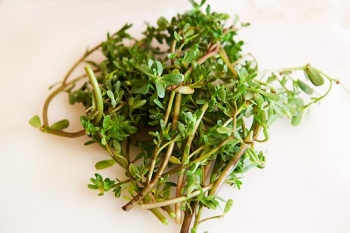Difference between revisions of "Purslane"
From Wikiwel
| Line 1: | Line 1: | ||
| − | [[File:Purslane.jpg|thumb|350px|left|Purslane]] | + | [[File:Purslane.jpg|thumb|350px|left|Purslane]]Other names : Portulaca oleracea, common purslane, verdolaga, pigweed, little hogweed, Pursley, Moss rose<br> |
Although the FDA classifies purslane as a broad-leaved weed, it's a popular vegetable and herb in many other countries, including China, Mexico, and Greece. | Although the FDA classifies purslane as a broad-leaved weed, it's a popular vegetable and herb in many other countries, including China, Mexico, and Greece. | ||
==Special Precautions of Purslane== | ==Special Precautions of Purslane== | ||
Revision as of 02:37, 26 April 2014
Other names : Portulaca oleracea, common purslane, verdolaga, pigweed, little hogweed, Pursley, Moss roseAlthough the FDA classifies purslane as a broad-leaved weed, it's a popular vegetable and herb in many other countries, including China, Mexico, and Greece.
Special Precautions of Purslane
Benefits and uses of Purslane are
- Cardiovascular disease : Purslane has the highest amount of heart-healthy omega-3 fats of any edible plant, according to researchers at the University of Texas at San Antonio. Purslane leaves (which can be eaten as a cooked vegetable) contain more omega-3 fatty acids than any other edible plant, making them good for improving brain and cardiovascular function.
- Cancer : Researchers discovered that purslane contains between 10 and 20 times more of the cancer-inhibiting antioxidant, melatonin, than any other fruit or vegetable tested!
